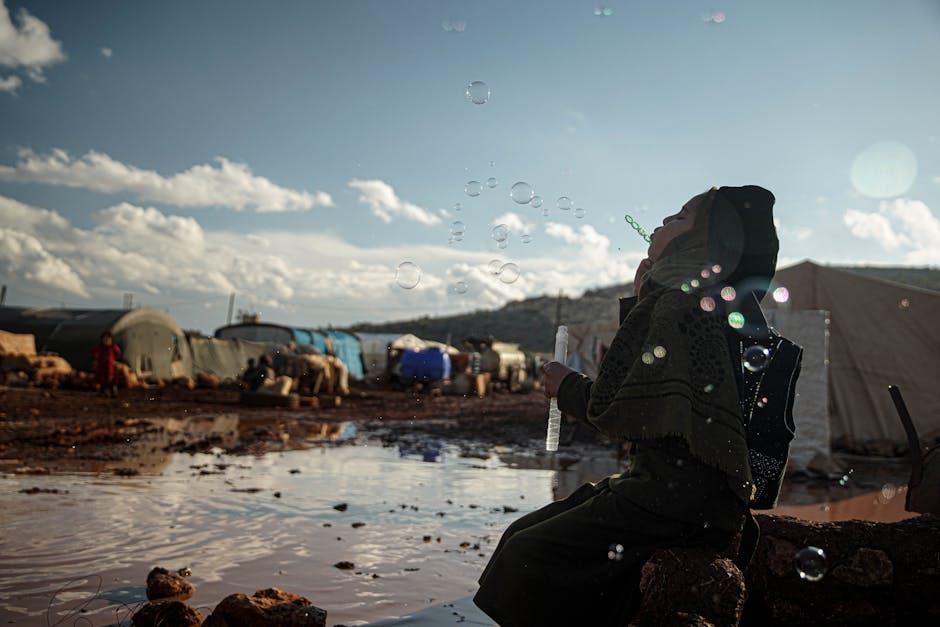⏱️ 7 min read
When facing life-or-death situations in the wilderness or during emergencies, conventional wisdom doesn't always align with what actually keeps you alive. The difference between survival and tragedy often comes down to knowing counterintuitive facts that most people never consider until it's too late. These remarkable insights challenge common assumptions and reveal the surprising science behind staying alive in extreme conditions.
Essential Survival Knowledge You Need to Know
1. The Rule of Threes Determines Your Survival Priorities
Survival experts rely on the Rule of Threes to prioritize actions in emergency situations. You can survive approximately three minutes without air, three hours without shelter in harsh conditions, three days without water, and three weeks without food. This hierarchy is crucial because most people incorrectly prioritize finding food when shelter and water should take precedence. In cold environments, hypothermia can kill within hours, making shelter your immediate concern after ensuring you can breathe. Understanding this framework prevents wasted energy on less critical tasks during the vital first hours of a survival scenario.
2. Drinking Untreated Water Can Be Better Than Dehydration
While survival guides emphasize treating water before consumption, severe dehydration poses a more immediate threat than waterborne pathogens. The symptoms of giardia or other waterborne illnesses typically take days to manifest, whereas dehydration impairs judgment and physical ability within hours. If you're in a true survival situation without purification methods and facing critical dehydration, drinking untreated water from flowing sources gives you time to find rescue or reach safety. The illness can be treated later, but severe dehydration causes irreversible organ damage and death much faster than most people realize.
3. Your Body Position While Sleeping Can Prevent Death
Sleeping position dramatically affects survival in cold weather conditions. Lying directly on frozen ground causes heat loss twenty-five times faster than losing heat to cold air. This conductive heat loss can lead to fatal hypothermia even when air temperature seems manageable. Creating insulation between your body and the ground using pine boughs, leaves, clothing, or any available material is more critical than covering yourself from above. Survival instructors teach that you need at least six inches of insulation beneath you in freezing conditions, yet most inexperienced outdoor enthusiasts focus exclusively on blankets or sleeping bags above them.
4. Cotton Clothing Becomes Your Enemy in Wet Conditions
The outdoor community has a saying: "Cotton kills." When cotton fabric becomes wet, it loses ninety percent of its insulating properties and takes an extremely long time to dry. Worse, wet cotton pulls heat away from your body through evaporative cooling. In contrast, wool retains approximately eighty percent of its warmth even when soaked, and synthetic materials like polyester wick moisture away from skin. Hypothermia deaths regularly occur in temperatures as warm as fifty degrees Fahrenheit when people wear wet cotton clothing. This fact has proven fatal for countless hikers who assumed they were safe because the weather wasn't extremely cold.
5. Fire Starting Depends on Preparation, Not Matches
The ability to create fire has little to do with ignition sources and everything to do with proper tinder preparation. Even with waterproof matches or a lighter, you cannot start a fire without dry, fine tinder that catches from a spark or small flame. Birch bark, dry grass, char cloth, cotton balls mixed with petroleum jelly, and wood shavings ignite easily and burn hot enough to ignite kindling. Most survival fire failures occur because people try to light large sticks directly. Successful fire starting requires collecting three categories of fuel: tinder that catches instantly, kindling smaller than your finger, and larger fuel wood. Missing any of these components leads to failure regardless of your ignition method.
6. Snow Is Not a Reliable Water Source
While snow can provide hydration, eating it directly accelerates hypothermia by lowering core body temperature. Your body must expend significant energy to melt snow in your mouth and warm it to body temperature, burning calories you cannot spare. Additionally, snow requires melting large volumes to produce relatively little water since it's mostly air. One cup of snow typically yields only a few tablespoons of water. In survival situations, you must melt snow before consuming it, preferably using body heat in a water bottle inside your clothing if fire isn't available. Many people don't realize that relying on eating snow for hydration can actually hasten death in cold weather scenarios.
7. The Human Body Can Survive Extreme Caloric Restriction
Contrary to popular belief, the absence of food poses minimal immediate threat compared to other survival factors. The human body can function for weeks without food by metabolizing fat stores and eventually muscle tissue. Hunger pangs actually diminish after the first few days as the body enters ketosis. The real danger of extended food deprivation is the impaired judgment and weakened physical condition that develops over time, not starvation itself in the short term. This fact explains why rescue operations focus on location and extraction rather than food drops for people lost in wilderness areas. Understanding this reduces panic and allows survivors to focus on shelter, water, and signaling for rescue.
8. Moving During Daylight Can Reduce Rescue Chances
The instinct to walk toward help often decreases survival odds. Search and rescue operations use the last known position as their starting point, creating search grids that expand outward. When lost individuals keep moving, they exit these search areas, forcing rescuers to expand their radius exponentially. Statistics show that people who stay put after realizing they're lost are found faster and in better condition than those who wander. The exceptions are situations where your location is unsafe or you have certain knowledge of civilization's direction. Staying visible, creating signals, and conserving energy typically proves more effective than random movement through unfamiliar terrain.
9. Shelter Construction Requires Smaller Spaces Than Expected
Survival shelters work best when barely larger than your body. A common mistake is building shelters too large, which makes them impossible to heat with body warmth alone. The most effective emergency shelters create a small, insulated cocoon that traps heat radiating from your body. Debris huts, for instance, should feel cramped and claustrophobic, with only enough room to lie down and sit up slightly. This confined space can maintain a temperature twenty to thirty degrees warmer than outside air temperature using only body heat. Large, comfortable shelters feel better psychologically but fail at the primary function of preventing hypothermia.
10. Panic Is the Primary Killer in Survival Situations
Research into survival incidents reveals that psychological factors kill more people than environmental hazards. Panic causes hyperventilation, impaired decision-making, and exhaustion from unnecessary physical exertion. The survival mindset requires accepting your situation, controlling fear responses, and methodically addressing priorities. Studies of survivors across various disasters show that those who pause, assess their situation, and create a plan have dramatically higher survival rates. The acronym STOP (Stop, Think, Observe, Plan) saves lives by interrupting the panic response. Many deaths attributed to exposure or dehydration actually result from poor decisions made during panic, such as discarding clothing, abandoning supplies, or making dangerous navigation choices.
Applying These Facts to Improve Your Survival Odds
These ten survival facts challenge common assumptions and highlight the gap between intuitive reactions and effective survival strategies. Understanding that shelter trumps food, that staying put often beats wandering, and that psychological control prevents fatal mistakes transforms how you prepare for and respond to emergencies. The consistent theme across these facts is that survival depends on knowledge and preparation rather than luck or physical strength. Whether you're an outdoor enthusiast, a prepper, or simply someone who wants to be prepared for unexpected situations, internalizing these counterintuitive truths can mean the difference between life and death when circumstances turn dire.






















